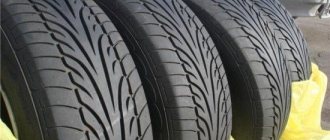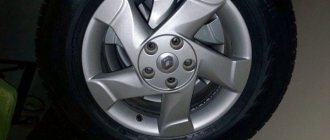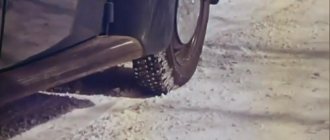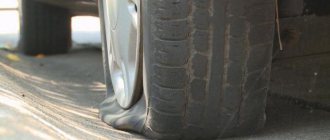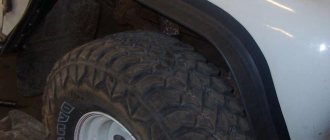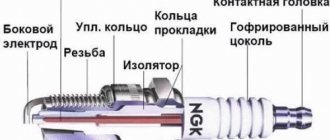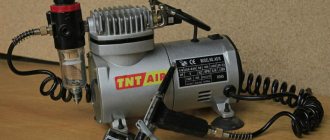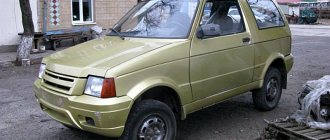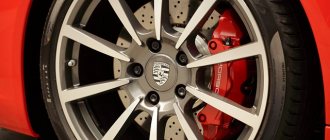Types of winter studless tires
To begin with, it is worth considering the Scandinavian type of friction tires. For the most part, the indicators are not inferior to spikes, which allows them to be used in the most difficult conditions.
First of all, the features of the tread are taken into account. It is deep, with a large number of segments of different shapes. This allows for improved road grip. It has pronounced shoulders that increase efficiency on snow and keep the car from drifting when cornering.
An important element of the tread is the sipes. Provide good grip on any road surface. It is the sipes that allow the Scandinavian Velcro tires to show results on ice that are not inferior to studded tires.
They are distinguished by soft rubber and do not freeze at the lowest temperatures. This leads to rapid abrasion when traveling on asphalt in positive temperature conditions.
Recommended for use in harsh, snowy winters. Since they are soft, you should drive carefully at high speed. It’s worth choosing such tires if the city doesn’t clear snow very well in winter, or if you live in the private sector.
Scandinavian
Another type of friction tires is European. Features a simple tread. Directional variants of the pattern are often used. This allows you to reliably remove water and slush from under the wheel. These winter friction tires often do not have developed shoulder segments, which somewhat limits their use in snowy areas.
They behave well during thaws, coping well with their tasks in wet snow. The rubber composition is stiffer, which makes it possible to hold the car on dry asphalt and high speeds.
Usually purchased for use in mild climates with a lot of thaws. They perform well in urban conditions, when you mostly have to drive on dry, clean asphalt.
If frosts above -20°C often occur in your region, you should not choose European tires.
European
Friction tires have a rubber composition that allows them to achieve effective grip on the road. Therefore, it is worth considering it in more detail.
First of all, the level of softness of the tires is taken into account. This parameter is measured on the Shore scale. For Scandinavian winter tires, this parameter is 50-60 units, achieved by adding silicon chips, oils and resins.
If we consider the “Eurowinter”, the level of softness will be 58-67 Shore. In fact, they do not deviate too much from standard rain tires in this parameter. It is not recommended to use tires with European tread in severe frost conditions.
It's also worth considering the top tread layer. It must grip the road reliably, including ice. For this purpose, the surface has micropores that ensure the rupture of the water film on the surface of the ice. You can notice these pores even without additional equipment; it is thanks to them that the tread surface appears rough.
Features of the Velcro splint
The functional features of Velcro are provided by the special properties of rubber and the special texture of the tire surface:
- a large number of lamellas;
- softness of materials;
- porous structure;
- abrasive microparticles.
All friction tires are connected by an increased number of lamellas. The lamella is a thin strip of rubber into which the tread is divided. This separation increases the pressure on the coating, resulting in improved adhesion. The following types of lamellas are distinguished:
- transverse;
- diagonal;
- zigzag.
The Velcro protector is equipped with lugs, like any other self-cleaning protector. The difference lies in the increased density of the arrangement, which has a positive effect on mileage, allowing the use of a larger number of lamellas. It is the edges of the tire sipes that cling to the surface, and in combination with the large tread depth, a stable and large contact patch is formed.
Under the weight of the car, the lamellas in the tread blocks diverge, which literally sticks to the surface of the snow-covered road surface. When leaving the contact zone with the road, the sipes converge and the tire self-cleans, displacing crushed ice and snow. But the lamellas are far from the only important condition. No matter how many of them are provided, maximum adhesion efficiency can only be ensured by the porous structure of the rubber. It is this that will absorb water when hitting the road surface.
The composition of the Velcro rubber includes a cryosilane mixture with silica, so it does not become rough at low temperatures, and a large number of micropores remove the water film. At the molecular level, each pore of the tire interacts with the road surface according to the suction cup principle, which provides not only an effective traction function, but also a short braking distance. At the same time, many manufacturers claim the addition of solid microparticles of inorganic and organic origin to the rubber mixture. Such abrasives perform the function of unique mini-spikes, which only enhances the friction properties.
Lamellas - what are they and what function do they perform?
All Velcro tires have sipes. This element significantly improves the tire's performance on slippery surfaces and snow.
Sipes mean cuts on the tread. Allow the tire to quickly adapt to any conditions. This is achieved by making the tread soft. Can be moved if necessary to remove water from the main protector. The sipes form small claws that increase friction on the road, which improves traction.
At the moment, lamellas are used in a variety of forms. There is no clear solution which type is better. We list the most common varieties.
- Straight;
- Quadrangular lamella
- Vonloo-shaped;
- Z-lamella;
- Zig Zag;
- 3D lamella;
- U-shaped lamella.
In practice, several types of lamellas are used at once. It is possible to achieve the greatest efficiency. They act approximately the same; under different conditions, the effectiveness of a particular type of lamella may vary.
We should also talk about the lamella pump. This is a lamella located on the shoulder blocks. In this case, the cut necessarily widens towards the outer edge of the block. It turns out to be more reliable to collect and remove water from the contact patch.
Principle of operation
A friction tire or “Velcro” is a class of winter tire that can cling to the ice surface without metal inserts. If in studded tires the interaction between the slippery coating and the tread consists of friction of the rubber and adhesion by the studs, then in friction tires only the friction force is used. The grip of a wheel on the road largely depends on the tread pattern. The greater their number and the total length of the edges in the contact patch, the better the wheel will handle the winter road. When accelerating, the rear edge of the tread block is used, and when braking, the front edge is used.
A heated winter tire can melt the ice structure. This is clearly evidenced by tread marks on the icy surface. The principle of operation of the Velcro protector is to remove (absorb) a thin film of water that forms between the icy surface and heated rubber, resulting in dry or semi-dry friction. The thickness of the water film is affected by air temperature and ice structure, so the traction properties of a tire depend entirely on climatic conditions. The lower the temperature drops in winter, the more effective the use of friction rubber is.
Standard size
The sizes of friction tires do not differ from summer or winter tires. The markings are the same. Let's look at it in detail.
Let's take size 215/65R16 102T as an example. The markings are located on the sidewall of the tire. Let's decipher what it means.
- 215 – profile width. Indicated in millimeters.
- 65 – tire profile height. It is the ratio of the height to the width of the profile. Shown as a percentage. If this option is not present, it is a high profile tire with more than 80% height.
- R – radial design.
- 16 – internal or landing diameter.
- 102 – load index.
- T – speed index.
Let's look at some of the nuances that need to be taken into account when choosing the size of friction tires.
First of all, you need to consider the width of the profile. Has a direct impact on the driving performance of the car. Usually the manufacturer gives a small run-up in the permissible width. For winter it is better to choose narrow tires, in this case it will be much easier to drive through the snow. If we take our example, instead of a width of 215 mm, you can take 205 mm, this will be the permitted size for most cars.
The height of the profile should also be taken into account. You need to look at the operating features of the car in your case. In general, Velcro winter tires can be chosen according to the rule - high-profile tires are better for winter.
But, you need to take into account some nuances. If you constantly drive in snow, it is really better to take tires with a profile greater than 75%. In cases where you constantly have to drive on highways and in the city, high-profile tires will be superfluous. Typically, the selection follows the following parameters.
- For a European tread, it is better to choose a profile of 55-65%. This is due to the higher movement speed tolerance.
- For a Scandinavian tire 65-75%, when used in the city. 80% if you plan to travel to virgin snow.
Knowing what types of tires there are, the best option can be selected.
When installing high-profile winter tires, it is worth remembering that the car will be less stable at high speeds and when cornering. Be careful when driving.
Buy correctly, don't get confused
In conclusion, I would like to note that many of us confuse the friction tire with the so-called EUROZIN , and then tell everyone that this “Velcro doesn’t work at all,” but this is not entirely true. EUROZIMA is designed for a very mild climate, literally for several days or weeks of not so low sub-zero temperatures, and its operation is also recommended on cleared and well-maintained roads - THIS IS A COMPLETELY DIFFERENT RUBBER. Don't confuse it with real winter!
Now let's watch a short video of the work.
I’ll finish this, I think the article and video were useful to you. Sincerely yours, AUTOBLOGGER.
Similar news
- Tubeless tire deflates | Why?
- Bridgestone Dueler H/P SPORT
- Economical tires
Add a comment Cancel reply
Speed index
The speed index is expressed as a Latin letter. It is indicated on the sidewall of the tire in the standard size. To decrypt the data you will need to use a table. As a rule, this parameter is influenced by the characteristics of the rubber compound and the tread.
Scandinavian tires are usually indexed Q (160 km/h) or T (190 km/h). This is primarily due to the technical features of the tires, which help to cope with snow more effectively, while making the tire less reliable at high speed.
European tires are often rated V (240 km/h). The reason is that the composition of the rubber mixture and tread characteristics are closer to rain tires, and they are loyal to speed.
In general, when choosing studless winter tires, you should look at the speed indicator only for reference. Driving on ice or just a winter road at speeds above 140-160 km/h is unsafe.
Advantages and disadvantages
Car tires with spikes
What type of winter tires is best to use can be clearly determined by clarifying the advantages and disadvantages of studded and friction tires.
Advantages of rubber - “Velcro”:
- Good grip and directional stability on wet asphalt surfaces.
- No noise.
- The slats do not harm the road surface.
- When visiting one of the European countries with your own car, you may find that only lamellas are allowed on the territory of the country and the use of studs is unacceptable.
- At subzero temperatures, these tires have sufficient elasticity to ensure driving comfort and safety.
- They help reduce the consumption of the fuel mixture; fuel consumption is slightly less than when using studded tires, but more than on summer tires.
- No steering wheel vibrations.
- The operating period is longer than that of tires with studs.
Disadvantages of friction tires:
- Poor adhesion to ice or icy surfaces.
- Long braking distance on ice.
- Passability on snow is lower than that of studded products.
Advantages of studded tires:
- Good grip when driving on ice and snow.
- Rapid braking on an icy surface or on ice.
- Excellent cross-country ability in deep snow.
- The controllability and directional stability of the car when driving on packed snow is much better than that of Velcro.
Disadvantages of studs:
- Spikes increase the noise of the product: driving comfort decreases.
- Studded tires can damage dry asphalt surfaces.
- They are characterized by higher fuel consumption than friction tires.
- Shorter operating period than the opponent.
- The presence of slight vibration of the steering wheel due to the high tread layer and studs.
- The spikes can wear out and fly out.
- At too high subzero temperatures (more than 200C), the grip of tires on ice decreases; the stud scratches the ice, but cannot break through it. At the same time, the stability and controllability of the car are reduced.
Load Index
To choose the right tires for a specific car, you need to take into account the load index. You can find it on the side. Usually indicated as an index, which is decrypted using a table. Sometimes commercial tires may simply indicate the maximum weight per wheel in kilograms.
Let's look at an example of how to choose a tire based on this parameter. You can do this yourself.
- We look at the car's PTS for the maximum curb weight. Let's say it will be 2400 kg.
- Divide 2400 kg by 4 (number of wheels). We get a load on one wheel of 600 kg.
- We look for the load in the table; it corresponds to index 90.
The maximum allowable index for our car will be 90.
It is recommended to always take studless tires with an index slightly less than the maximum. This will help avoid problems in case of overload.
Rules for running-in winter friction tires
Drivers are often interested in what break-in rules should be applied to non-studded tires. In general, there are no strict requirements for running in friction tires. There are no spikes that take time to get into place.
But, a film of the compound remains on the surface of the tread, which is used to lubricate the mold for making the tire. Because of this, a new tire always has a reduced coefficient of road grip. Therefore, for the first 50-100 km of the journey, avoid situations with sudden braking and acceleration. Nothing more is required.
How do spikes differ from Velcro?
The principle of operation of studded wheels is simple and clear: traction with ice is provided by metal pins protruding above the surface of the rubber.
Velcro, which would be more correctly called friction tires, are effective due to the special structure of the sipes, the microstructure of the tread edges and the special rubber composition. These features allow the tire to create greater frictional force on the surface.
Friction tires should not be confused with studless winter tires, which were previously widely produced by domestic tire companies. The old-style models were regular spikes that did not have spikes installed. If desired, they could be equipped with spikes in garage conditions. Velcro works in a fundamentally different way; you cannot stud them. That is why it is more correct to call them not “studless” tires, but “studless” tires.
Service life of winter tires
When purchasing, look at when the tire was manufactured. According to GOST requirements, it should be stored in a warehouse for no more than 3 years from the date of manufacture. Naturally, the shorter the shelf life, the better.
Maximum service life is 5 years. Even good tires should not be used longer than this period. But in practice, it should be changed even earlier. The point is the tread, which initially has a groove depth of 8-10 mm. A depth of 4-6 mm is considered acceptable; if the tread wears down to this level, the tire should be changed. You can determine the depth of the grooves yourself, using the marks installed by the manufacturer, or go to the nearest tire shop and check with a depth gauge.
The maximum mileage for a tire can reach 45-60 thousand kilometers. Depends on the manufacturer and tread type. European tires last longer.
The average service life in practice is 2-3 seasons. To avoid problems, before each winter you should carefully inspect the tires and check the tread for wear. If in doubt, it is better to replace the kit. Storage in the summer has an impact; storage features greatly affect the service life.
Rubber Velcro Manufacturers
Velcro winter tires from Bridgestone
The service life of winter Velcro rubber, with proper use and only in winter, averages about ten years. There is a significant selection of Velcro on the tire market:
- Bridgestone Blizzak VRX . Japanese production. These Velcro mark good maneuverability on snowy roads and fast braking.
- Continental ContiWinterContact TS850 . Designed for moderate winters. It performed well on wet roads.
- Michelin, Nokian, Pirelli, Goodyear.
It's hard to say which is the best Velcro winter tires. All companies try to produce only high-quality products. The choice is up to car owners. Particular attention should be paid to the depth of the pattern and the presence of checkers located across the entire surface in a checkerboard pattern. And of course, you need to keep in mind your region of residence. Technical recommendations for Velcro vary. Some are designed for warm and wet winters, others for harsher and drier ones. Before purchasing Velcro rubber, you need to read the passport, which describes all the recommendations. And don't be fooled by low prices. It is possible that this is not branded rubber, but a counterfeit. There is no ban on Velcro rubber in Russia. Although our country is climatically very diverse. In the Urals and Siberia, winter frosts drop below -30°C. Winters are dry and snowy. In the European part of the country, winters are mild and wet, with little snow and slush on the roads. In any case, you should choose tires carefully, guided primarily by personal and public safety.
How to save money when purchasing
Drivers often face the question of how to save money on winter tires. Many people make the mistake of buying used tires. This cannot be done. After all, you don’t know how it was used, whether there was damage and other nuances. With the current level of technology, for example, it is difficult to distinguish a retread, and it will wear off very quickly. Therefore, take only new tires.
If you need to save money, there is an option with a smaller standard size. These tires cost less. It is important to take into account the recommendations of the car manufacturer and stay within the acceptable parameters.
It is impossible to definitively answer which non-studded tires are best. Too many parameters influence the choice. We list the main parameters:
- tread type;
- standard size;
- permissible load.
These are the main points that affect the performance characteristics of tires.
When to change Velcro to summer tires
Changing tires at a car service center
In the spring, when the snow is melting rapidly and the air temperature during the day is on average at zero, it is time to change any winter tires to summer ones. First of all, due to safety reasons and high wear on tires that are not intended for off-season use.
During the warm period, Velcro rubber becomes especially soft and loses some of its properties. Therefore, to what temperature you can ride on Velcro, manufacturers definitely recommend no more than +5°C. By the way, there is a fine of 500 rubles for late change of tires. Each region has its own time to change your car’s shoes, depending on the climatic conditions; the main thing is not to miss it. In addition, in the event of an accident, the insurance company may not pay for damages due to out-of-season tires. Is it possible to ride on Velcro in the summer? Many drivers ask this question. There are different opinions on this topic on different forums. But you just need to familiarize yourself with the technical characteristics of this tire. The answer here is clear. Technicians explain that riding Velcro in the summer is unsafe. Advice to drivers: think again before using Velcro during the warm season. After all, road safety, your own life and the health of those around you depend on it. In the summer, when the Velcro softens greatly, the car practically “floats” on the road. Velcro winter tires are prohibited by law from being used in summer. It specifically states that winter tires are not allowed for use from the beginning of June until the end of August.
